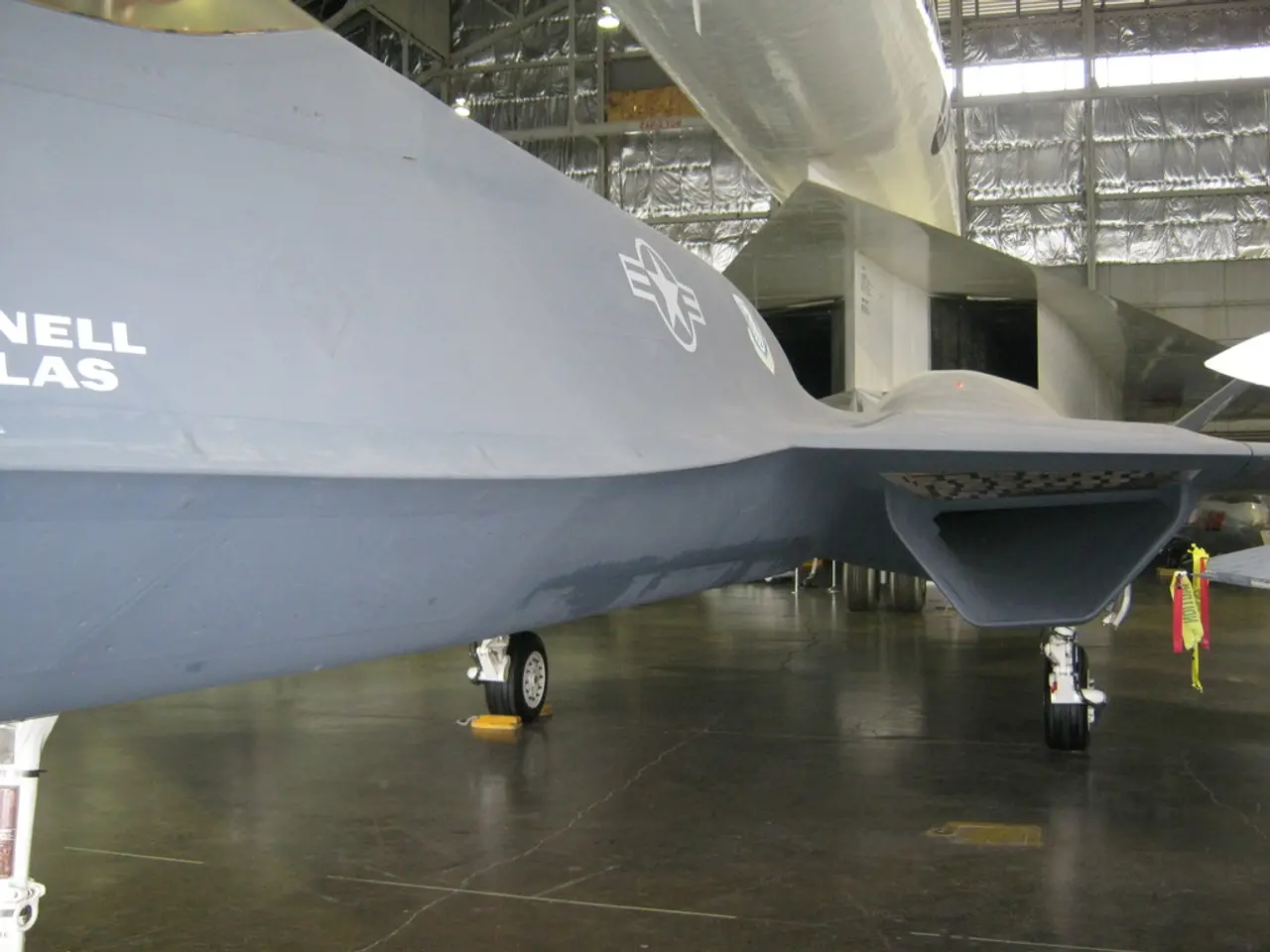Remotely Piloted Aircraft available on demand - an overview of RPAAS.
In the ever-evolving world of technology, one innovation that is gaining significant traction is the Remotely Piloted Aircraft as a Service (RPAAS). This service, often falling under the Drone-as-a-Service (DaaS) and Unmanned Aerial Vehicle (UAV) services markets, is experiencing a rapid growth spurt across numerous industries.
RPAAS offers a unique business model where companies provide drone operations, data collection, and analytics as a fully managed service. This model is transforming the commercial drone market, lowering the entry barrier for businesses that need aerial data but lack the internal expertise.
One of the key attractions of RPAAS is its ability to process data into 3D models and deliver volume reports through an online portal. This feature is particularly useful in industries requiring frequent or large-scale aerial data collection, such as infrastructure and utility inspections, agricultural surveys, construction progress mapping, environmental monitoring, emergency response, and disaster assessment.
An example of RPAAS in use is for infrastructure and utility inspections, such as power lines, wind turbines, and pipelines. The RPAAS provider flies weekly missions to capture high-resolution imagery of the stockpiles, enabling clients to track materials without ever piloting a drone.
Moreover, RPAAS is also widely used in agriculture for crop health and irrigation monitoring. In the mining sector, RPAAS is employed for regular volumetric surveys of stockpiles across multiple remote sites.
The rise of RPAAS aligns with the increase of Drone-as-a-Service (DaaS) platforms, enabling recurring revenue streams for providers and faster adoption of drone technology in sectors like agriculture, energy, and logistics. Pricing for RPAAS depends on flight frequency, area coverage, and data processing requirements, with small projects starting around a few hundred dollars per mission, while enterprise-level subscriptions can cost thousands per month.
The Drone-as-a-Service market is projected to reach approximately $179.3 billion by 2030, driven largely by increasing adoption in surveillance, monitoring, construction, insurance, aerospace, and real estate sectors. Surveillance and monitoring remain the largest revenue drivers within RPAAS, with industrial inspection, maintenance, and mapping rapidly gaining ground due to high return on investment and operational efficiencies.
As technology continues to evolve, autonomous and semi-autonomous drones, including sophisticated AI-enabled systems, are augmenting traditional remotely piloted aircraft. Fully autonomous UAVs are expected to be the fastest-growing segment, featuring advanced flight planning and mission execution without constant operator input.
The Middle East, Eastern Europe, Asia-Pacific, and developing countries show intensified procurement and adoption due to defense modernization and cost-saving drives, while North America leads in commercial expansion across logistics and natural-resource management. Countries like the U.S., China, Russia, and Israel invest in mission-specific high payload UAVs, influencing market dynamics.
Although military use remains significant, commercial applications via RPAAS are rapidly expanding, with a broader industrial footprint, especially as AI and swarm technologies mature. The compound growth rates range broadly from about 10% to over 17%, depending on the specific segment and region, highlighting both robust demand and evolving technology impact across defense and commercial industries.
In summary, the RPAAS market is on a strong growth trajectory, driven by advances in drone autonomy, expanding use cases across surveillance, inspection, logistics, and safety, and the adoption of scalable service models. Service providers handle everything in RPAAS, including certified pilots, regulatory compliance, data processing, and delivery of actionable insights, offering clients predictable costs and turnkey solutions.
- As technology advances and AI matures, the RPAAS market is increasingly adopting sophisticated AI-enabled gadgets for various uses, such as autonomous and semi-autonomous drones, making data analytics more efficient and precise.
- The data analytics provided by RPAAS is particularly useful in industries like agriculture, construction, and environmental monitoring, as it enables the processing of large-scale aerial data into actionable insights, like 3D models and volume reports, which can be easily accessed online.




